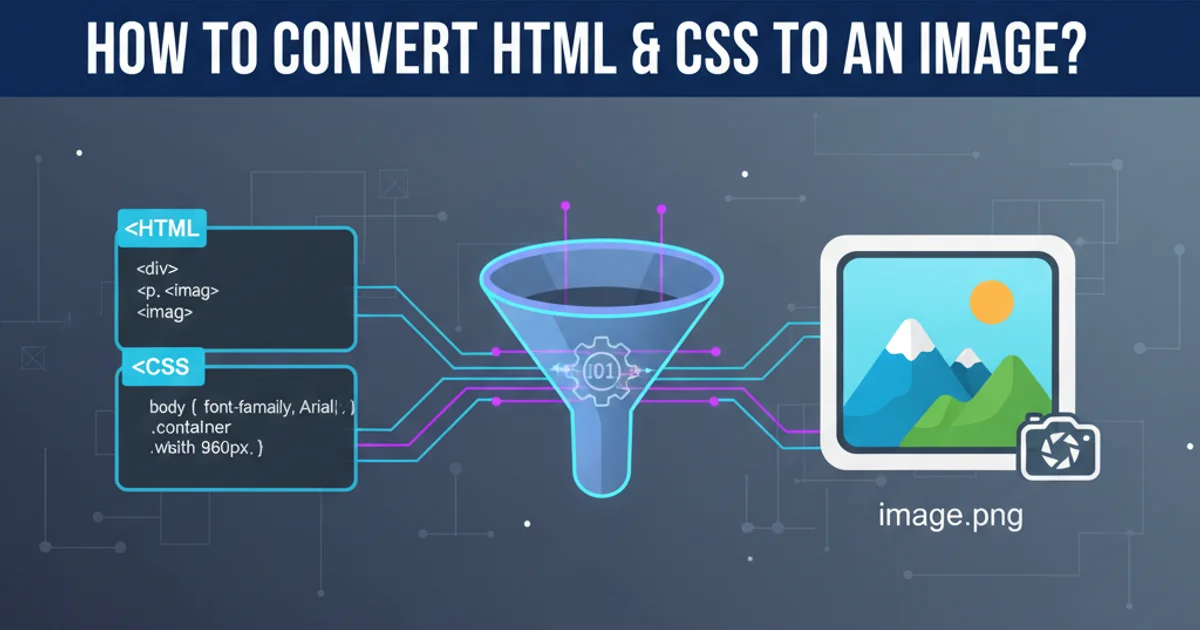React alternatives
Categories:
Beyond React: Exploring Modern JavaScript UI Alternatives

Dive into the diverse ecosystem of JavaScript UI libraries and frameworks beyond React. Discover options that prioritize performance, bundle size, developer experience, and specific use cases, helping you choose the best tool for your next project.
React has dominated the front-end landscape for years, and for good reason. Its component-based architecture, virtual DOM, and extensive ecosystem have made it a go-to choice for countless developers. However, the JavaScript world is constantly evolving, and a wealth of innovative alternatives have emerged, each offering unique advantages. This article explores some of the most compelling React alternatives, focusing on their core philosophies, performance characteristics, and ideal use cases.
Why Consider Alternatives to React?
While React is powerful, it might not always be the perfect fit. Several factors can drive developers to explore other options:
- Bundle Size and Performance: For highly performance-critical applications or those targeting low-power devices, React's runtime and bundle size can sometimes be a concern. Alternatives often boast smaller footprints and faster initial load times.
- Learning Curve and Simplicity: Some developers find React's JSX and state management patterns (especially with Redux or Context API) to have a steeper learning curve. Simpler frameworks can offer a more direct path to productivity.
- Specific Use Cases: Certain frameworks are optimized for particular scenarios, such as highly interactive data visualizations, embedded widgets, or applications requiring extreme reactivity without a virtual DOM.
- Developer Preference and Innovation: The JavaScript community thrives on innovation. Exploring new tools can lead to fresh perspectives, improved workflows, and a deeper understanding of front-end development paradigms.
flowchart TD
A[Start Project] --> B{Is React the best fit?}
B -->|Yes| C[Use React]
B -->|No| D{Performance Critical?}
D -->|Yes| E[Consider Svelte, SolidJS]
D -->|No| F{Simplicity/Small Bundle?}
F -->|Yes| G[Consider Vue, Preact, Alpine.js]
F -->|No| H{Need Strong Typing/Enterprise?}
H -->|Yes| I[Consider Angular]
H -->|No| J[Explore Other Niche Frameworks]
C --> K[Deploy]
E --> K
G --> K
I --> K
J --> KDecision flow for choosing a JavaScript UI framework
Vue.js: The Progressive Framework
Vue.js is often lauded for its approachability and flexibility. It's designed to be incrementally adoptable, meaning you can use it to enhance a small part of an existing application or build a full-scale single-page application (SPA). Vue's templating syntax is intuitive, resembling standard HTML, and its reactivity system is highly efficient.
Key Features:
- Gentle Learning Curve: Easy to pick up for developers familiar with HTML, CSS, and JavaScript.
- Reactivity System: Uses a proxy-based reactivity system that automatically tracks dependencies, leading to efficient updates.
- Single-File Components (SFCs): Encapsulates HTML, CSS, and JavaScript for a component in a single
.vuefile, promoting modularity. - Flexible: Can be used as a library or a full-fledged framework with its ecosystem (Vue Router, Vuex/Pinia).
Ideal Use Cases: Rapid prototyping, small to medium-sized SPAs, enhancing existing server-rendered applications, and projects where developer velocity is a priority.
<div id="app">
<p>{{ message }}</p>
<button @click="reverseMessage">Reverse Message</button>
</div>
<script src="https://unpkg.com/vue@3/dist/vue.global.js"></script>
<script>
const { createApp, ref } = Vue
createApp({
setup() {
const message = ref('Hello Vue!')
function reverseMessage() {
message.value = message.value.split('').reverse().join('')
}
return {
message,
reverseMessage
}
}
}).mount('#app')
</script>
A simple 'Hello World' example in Vue 3 using the Composition API.
Svelte: The Compiler-First Approach
Svelte takes a fundamentally different approach than most other frameworks. Instead of running in the browser, Svelte is a compiler that transforms your component code into highly optimized, vanilla JavaScript at build time. This means there's no virtual DOM, no runtime overhead, and incredibly small bundle sizes.
Key Features:
- No Virtual DOM: Directly manipulates the DOM, leading to potentially faster updates and smaller bundles.
- True Reactivity: Uses simple variable assignments to trigger updates, making state management intuitive.
- Compiler-Based: Shifts work from runtime to compile time, resulting in highly optimized output.
- Built-in State Management: Context API and stores provide simple, effective state management.
Ideal Use Cases: Performance-critical applications, embedded widgets, mobile-first experiences, and projects where minimal bundle size is paramount.
<!-- App.svelte -->
<script>
let name = 'world';
function handleClick() {
name = name === 'world' ? 'Svelte' : 'world';
}
</script>
<h1>Hello {name}!</h1>
<button on:click={handleClick}>Change Name</button>
A basic Svelte component demonstrating reactivity and event handling.
SolidJS: Reactivity Without the Virtual DOM
SolidJS offers a unique blend of React's JSX syntax and component model with a highly performant, fine-grained reactivity system that bypasses the virtual DOM entirely. It compiles JSX into real DOM nodes and wraps updates in reactive primitives, leading to extremely efficient updates and minimal overhead.
Key Features:
- JSX Syntax: Familiar to React developers, making the transition smoother.
- Fine-Grained Reactivity: Updates only the specific parts of the DOM that change, without diffing a virtual DOM.
- No Virtual DOM: Achieves high performance by directly updating the DOM.
- Small Bundle Size: Despite its power, SolidJS maintains a very small runtime.
Ideal Use Cases: High-performance UIs, complex data dashboards, applications requiring extreme responsiveness, and developers who appreciate React's component model but seek better performance characteristics.
import { createSignal } from 'solid-js';
import { render } from 'solid-js/web';
function Counter() {
const [count, setCount] = createSignal(0);
return (
<div>
<h1>Count: {count()}</h1>
<button onClick={() => setCount(count() + 1)}>Increment</button>
</div>
);
}
render(() => <Counter />, document.getElementById('app'));
A SolidJS counter component demonstrating signals and JSX.